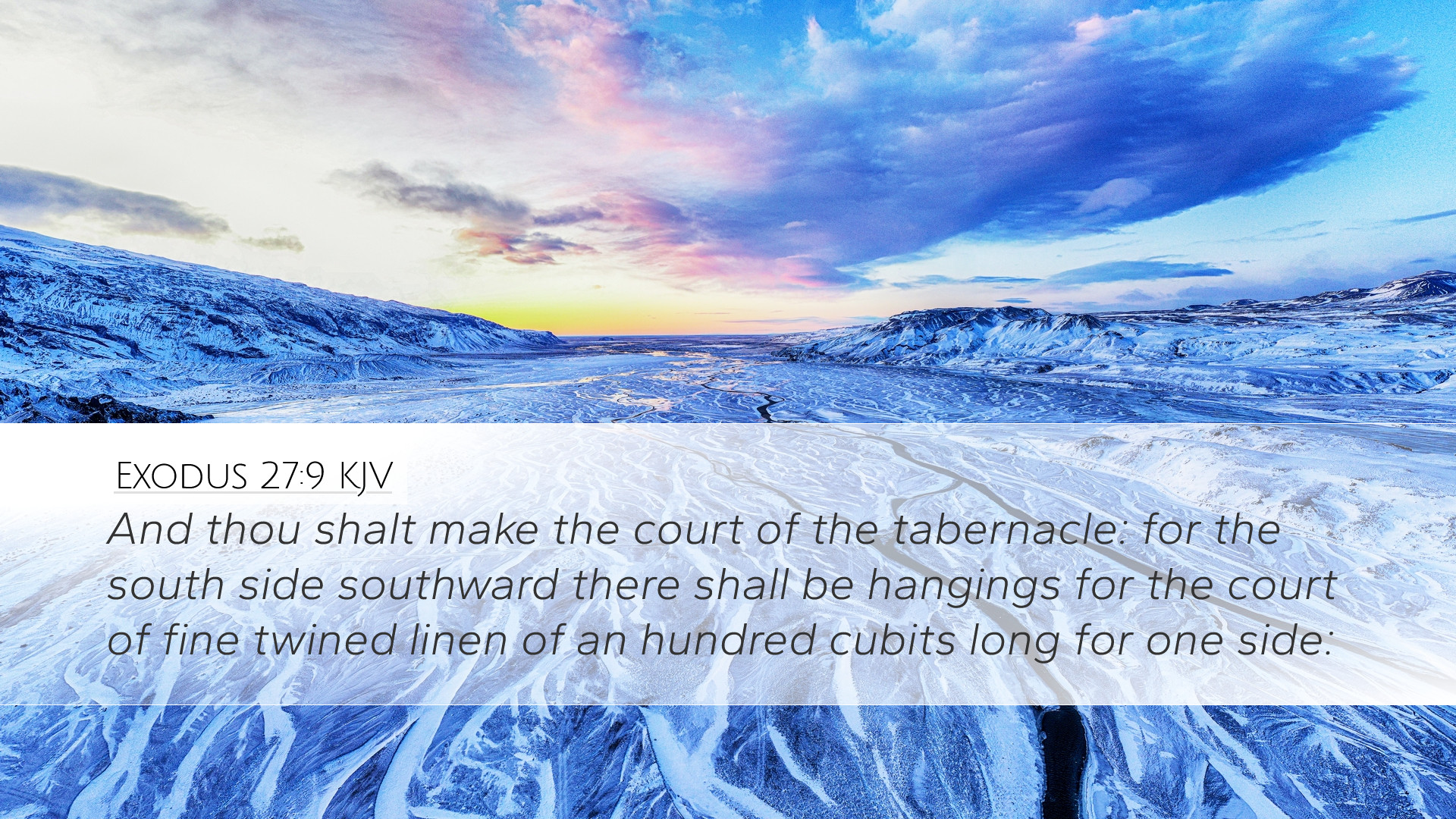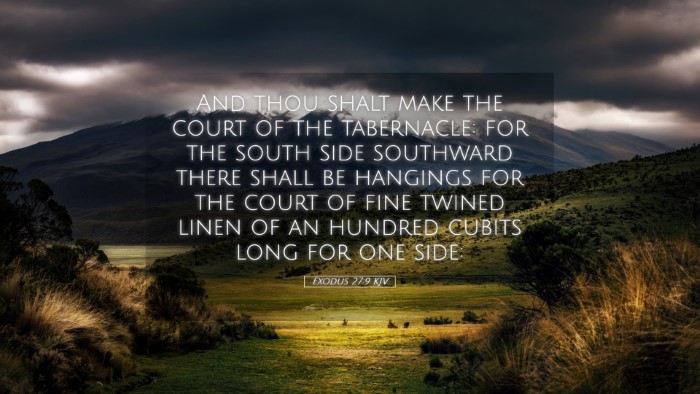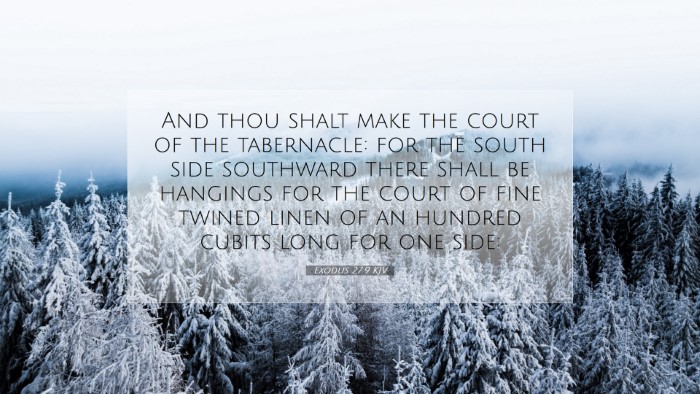Commentary on Exodus 27:9
Exodus 27:9 states:
"And thou shalt make the court of the tabernacle: for the south side southward there shall be hangings for the court of fine twined linen of an hundred cubits long for one side."
Introduction
This verse outlines the instructions for creating the court of the tabernacle, emphasizing the significance of the materials used and the dimensions prescribed. The details reflect not only practical architectural needs but also profound theological meanings that resonate throughout scripture.
Contextual Overview
In this chapter, God provides detailed instructions to Moses regarding the construction of the tabernacle, the place of worship for the Israelites as they journey through the wilderness. The tabernacle serves as a microcosm of heavenly worship and a manifestation of God's presence among His people.
Insights from Public Domain Commentaries
Matthew Henry's Commentary
Matthew Henry emphasizes the symbolism of the tabernacle's structure, particularly the court. He notes that the hangings made of fine twined linen symbolize purity and righteousness. This is reflective of God's holiness and serves as a reminder to the Israelites of the kind of worship that is acceptable before Him.
- Spiritual Significance: The linen hangings act as a divider, delineating the sacred from the profane, illustrating the need for separation from sin and the world.
- Dimensions: The precise measurement of one hundred cubits indicates God's orderliness and the importance of adhering to His commandments in worship.
Albert Barnes' Notes
Albert Barnes provides a thorough exposition on the construction and layout of the tabernacle's court, pointing out its function in the communal worship of the Israelites. He stresses that the court was to serve not only as a physical boundary but also as a means of directing the focus of worship toward God.
- The Purpose of the Court: Barnes notes that the court allowed for gatherings and sacrifices, thereby indicating that worship is both communal and personal in approach.
- The Nature of Materials: The use of fine twisted linen signifies care and devotion in worship, encouraging believers to offer God their best.
Adam Clarke's Commentary
Adam Clarke delves into the cultural significance of linen in ancient Israelite society. He observes that linen was a fabric associated with wealth and purity, thus serving as a metaphor for the expected ethos of worshipers entering the tabernacle.
- Historical Context: Clarke references the textile practices of the time and suggests that the hangings would evoke a sense of majesty and sacredness among the worshipers.
- Theological Implications: The separation created by the court's hangings represents the barrier between God and man that is ultimately overcome through Christ, making the tabernacle a prophetic symbol of the coming Messiah.
Spiritual Reflections
As pastors, students, and scholars contemplate this verse, it becomes evident that the construction of the tabernacle, and particularly the court, is replete with lessons for modern worship and community life.
- Holiness in Worship: The emphasis on purity and righteousness in worship remains fundamental today, reminding congregants that worship should stem from a heart aligned with God's will.
- Community Focus: The need for a communal space for worship reflects the importance of gathering as a body to engage in corporate worship, prayer, and community service.
- God’s Presence: The tabernacle serves as a reminder that God desires to dwell among His people. This truth invites believers to be mindful of their conduct and the atmosphere they create in their places of worship.
Conclusion
Exodus 27:9, while seemingly practical in its directions, conveys deep spiritual truths about the nature of God, the holiness required in worship, and the community's role in honoring Him. The insights drawn from the commentaries of Matthew Henry, Albert Barnes, and Adam Clarke encourage a robust theological reflection on how these ancient instructions continue to inform and shape modern worship practices.


